lifeboats
 I was listening to a book recently about shipwrecks on the Great Lakes and a thought came to my mind that really made me quite sad…though definitely not as sad as when I consider the loss of life that took place in those many wrecks. My Uncle Bill Spencer told me years ago that the Great Lakes are littered with ships that were lost in some of the worst storms on the lakes. In fact, he told me that if you fly over Lake Superior, which is the lake near where he lived most of his life, you could actually see the ships on the bottom of the lake. That thought always made me want to charter a small plane and go see for myself.
I was listening to a book recently about shipwrecks on the Great Lakes and a thought came to my mind that really made me quite sad…though definitely not as sad as when I consider the loss of life that took place in those many wrecks. My Uncle Bill Spencer told me years ago that the Great Lakes are littered with ships that were lost in some of the worst storms on the lakes. In fact, he told me that if you fly over Lake Superior, which is the lake near where he lived most of his life, you could actually see the ships on the bottom of the lake. That thought always made me want to charter a small plane and go see for myself.
Shipwrecks aside, the book told of the different reasons that ships went down, and how the safety regulations were often extremely inadequate. From not enough lifeboats, to lifejackets that were stored to far from the posts to be reached, to companies who regularly pressured their 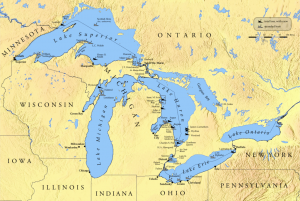 captains to take their ships out in terrible storms, the life of the sea was very dangerous. Of course, there are still shipwrecks today, although the last sinking on the Great Lakes was on November 10, 1975, when the SS Edmond Fitzgerald went down in a horrible November gale. With more recent safety regulations, the Great Lakes have been able to stave off shipwrecks in the last 45 years.
captains to take their ships out in terrible storms, the life of the sea was very dangerous. Of course, there are still shipwrecks today, although the last sinking on the Great Lakes was on November 10, 1975, when the SS Edmond Fitzgerald went down in a horrible November gale. With more recent safety regulations, the Great Lakes have been able to stave off shipwrecks in the last 45 years.
Still, it is not the number of wrecks, or even the lives lost, that has me considering a loss that is even greater…and least from the viewpoint of genealogy. As I was listening to the book, I heard that in several situations, they could not get an exact count of the lost, even if they technically knew how many were on board. The ships manifests had gone down with the ship. My mind raced. If there were people on those ships who had 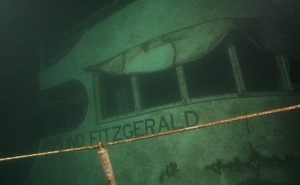 immigrated here, and their names were not recorded somewhere, they could virtually disappear and along with them, their line in the family tree they came from. I know that the many genealogy fanatics, like me, would just cringe at the thought of one of our ancestors simply vanishing. There are so many ways for a family line to get muddied. Name changes, marriages, undocumented deaths, as well as those who just left without telling anyone, are all among the lost ones, but I hadn’t considered those who meant to stay in touch, but who were never heard from, and their family back in Europe or wherever they came from, had no idea what happened. All they knew was that they were lost forever.
immigrated here, and their names were not recorded somewhere, they could virtually disappear and along with them, their line in the family tree they came from. I know that the many genealogy fanatics, like me, would just cringe at the thought of one of our ancestors simply vanishing. There are so many ways for a family line to get muddied. Name changes, marriages, undocumented deaths, as well as those who just left without telling anyone, are all among the lost ones, but I hadn’t considered those who meant to stay in touch, but who were never heard from, and their family back in Europe or wherever they came from, had no idea what happened. All they knew was that they were lost forever.
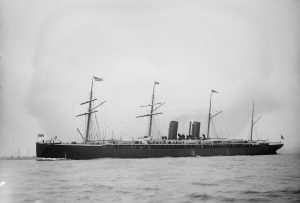 The massive number of ships that sail and have sailed the oceans are mostly safe, but by pure logic, there would also be a number of them for whom safe passage was not to be. For the steamer Alaska, August 8, 1921 would go down in history as the day when her number was up. Shortly after 9:00 pm, the Alaska was sailing south along the California coast, bound for San Francisco, when it hit Blunts Reef…twice. Blunts Reef is located 40 nautical miles south of Eureka, California.
The massive number of ships that sail and have sailed the oceans are mostly safe, but by pure logic, there would also be a number of them for whom safe passage was not to be. For the steamer Alaska, August 8, 1921 would go down in history as the day when her number was up. Shortly after 9:00 pm, the Alaska was sailing south along the California coast, bound for San Francisco, when it hit Blunts Reef…twice. Blunts Reef is located 40 nautical miles south of Eureka, California.
Immediately, the crew knew they were in trouble. Wireless distress signals were flashed. Five miles away the steamer Anyox of Vancouver, British Columbia, Canada picked up the signals…quickly, while disregarding fog and placing themselves in danger of striking the same rocks as the Alaska, put on full speed to the rescue. At 9:30 pm the Anyox received the Alaska‘s final message: “We are sinking by the head.” Before the Anyox could reach the stricken Alaska the ship had sunk, but that was not all that happened to the Alaska.
As the ship sunk, the ship’s boilers exploded…passengers and members of the crew of the steamer Alaska were blown from the decks of the vessel into the ocean. The Anyox, traveling dangerously fast in the foggy night, came upon a lifeboat with survivors from the Alaska. The boat was partially filled with sea water and oily scum. The oil, survivors said, had been thrown over them and into their boat by the explosion of the Alaska‘s boilers, which wrecked the Alaska amidships. The sinking of the Alaska took the lives of 48 of the 214 people on board.
According to the survivors, some of the deaths were caused by the explosion, which threw some passengers and members of the crew into the ocean. Some of those blown into the sea regained the vessel or were saved by clinging to wreckage or finding their way into lifeboats. Others, unfortunately, were either killed or drowned before help came. The Alaska’s sinking came so quickly that all the vessel’s lifeboats could not be deployed. JH Moss and CL Vilin, both of Chicago, said the lifeboat they finally reached had been swept off the decks of the Alaska as the ship settled into the ocean. Other lifeboats, never left their davits and went down with the ship. HS Laughlin of Washington DC, where he worked with the United States Shipping Board, said that a Mr and Mrs Phillips tried for an hour to be taken into a lifeboat after they had been thrown off the Alaska into the water. The survivors all praised the efforts of the officers and crew of the rescue ship Anyox under Captain Snoddy, without whom they would not have been alive.
When the Anyox picked up the first lifeboat and took its passengers aboard Second Officer Andrew Sinclair requested permission from Captain Snoddy to take the Alaska‘s lifeboat and seek survivors in the water who were swimming about and clinging to wreckage. Permission given, three seamen volunteered to accompany 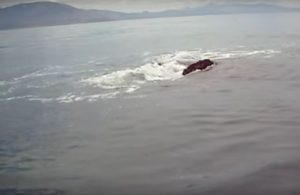 Sinclair. They took the lifeboat and within thirty minutes had rescued thirty persons from the water, rafts, and wreckage, and had put them aboard the Anyox. Captain Harry Hobey of the Alaska, the survivors declared, went down with his ship. Coast Guard vessels Sunday patrolled the waters looking for the wreck. The Coast Guard tugboat, Hanger brought in twelve bodies, all covered with oil. Later fishermen brought five additional bodies to San Francisco. Passengers criticized the Alaska‘s lifeboats. It was said some were not properly manned, had insufficient oars and leaked when put into the water. Nevertheless, those lifeboats had held long enough tp get the complaining passengers to safety. Sometimes, it seems like people forget to be thankful.
Sinclair. They took the lifeboat and within thirty minutes had rescued thirty persons from the water, rafts, and wreckage, and had put them aboard the Anyox. Captain Harry Hobey of the Alaska, the survivors declared, went down with his ship. Coast Guard vessels Sunday patrolled the waters looking for the wreck. The Coast Guard tugboat, Hanger brought in twelve bodies, all covered with oil. Later fishermen brought five additional bodies to San Francisco. Passengers criticized the Alaska‘s lifeboats. It was said some were not properly manned, had insufficient oars and leaked when put into the water. Nevertheless, those lifeboats had held long enough tp get the complaining passengers to safety. Sometimes, it seems like people forget to be thankful.
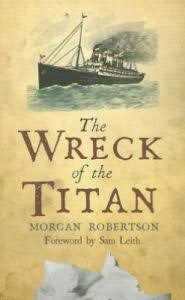 Fourteen years before the Titanic sank, Morgan Robertson wrote the novella Futility. It was about the large unsinkable ship “Titan” hitting an iceberg in the Northern Atlantic. Both the Titanic and the fictional Titan did not have enough lifeboats for the thousands of passengers on board. Both were short by about half. While the story behind the sinking of the Titan is somewhat different than the actual events of Titanic, the two are eerily similar, and with so many similarities, one has to wonder how this could have happened. It was like Robertson knew what was coming.
Fourteen years before the Titanic sank, Morgan Robertson wrote the novella Futility. It was about the large unsinkable ship “Titan” hitting an iceberg in the Northern Atlantic. Both the Titanic and the fictional Titan did not have enough lifeboats for the thousands of passengers on board. Both were short by about half. While the story behind the sinking of the Titan is somewhat different than the actual events of Titanic, the two are eerily similar, and with so many similarities, one has to wonder how this could have happened. It was like Robertson knew what was coming.
The story of the Titan puts the “unsinkable” ship sailing through the north Atlantic at breakneck speeds, because as we all know nothing could sink such a ship. Any breech of the holds would immediately close the water-tight doors, stopping the spillover into the other holds. As Titan sailed through the icy waters, they came into an area of fog, and still they did not slow down. Watchmen were posted, one of whom, John Rowland, tended to indulge in drink, since the love of his life left him, and now somehow was on the same ship, and she was married and had a child. While Rowland had been drinking, he was still the one to spot another ship…not that it made a difference. The titan continued full speed ahead, cutting the smaller vessel in half and killing all aboard. The ship still didn’t slow down, and the captain tried to buy the silence of his men, but Rowland would not be bought. As the trip continues, things just get worse. Before long, the ship hits an iceberg, and enough holds are breeched to seal Titan’s doom.
 The book, “The Wreck of the Titan,” originally called “Futility,” was so similar to the events of the Titanic, that it was almost eerie, and yet, it was enough different that you knew it was not the same event. It was simply a “fact is stranger than fiction” situation, and no one could possibly have anticipated that a ship with a very similar name, loaded with people and half the necessary lifeboats, would sail at breakneck speeds across the north Atlantic during a time when the icebergs were floating everywhere, just like the ship in the story, and that the ship…Titanic would suffer the same fate as the storybook ship, Titan suffered, fourteen years after the author dreamed up the story in his mind. And yet that is exactly what happened.
The book, “The Wreck of the Titan,” originally called “Futility,” was so similar to the events of the Titanic, that it was almost eerie, and yet, it was enough different that you knew it was not the same event. It was simply a “fact is stranger than fiction” situation, and no one could possibly have anticipated that a ship with a very similar name, loaded with people and half the necessary lifeboats, would sail at breakneck speeds across the north Atlantic during a time when the icebergs were floating everywhere, just like the ship in the story, and that the ship…Titanic would suffer the same fate as the storybook ship, Titan suffered, fourteen years after the author dreamed up the story in his mind. And yet that is exactly what happened.
 On April 10, 1912, Titanic set sail from Southampton. Titanic called at Cherbourg in France and Queenstown (now Cobh) in Ireland before heading west to New York. For the passengers and crew, Titanic was the ultimate in luxury, and to be on it was the ultimate thrill. The ship was the most luxurious ship of its day, and to add to their sense of excitement, it was unsinkable. The passengers were assured that the ship had so many fail-safes in place that the builders didn’t even think the lifeboats were necessary, and any that were considered to be in the way, were removed, in what would prove to be a fatal mistake. In the end, there were 20 lifeboats on board the ship, when she was supposed to have 64 lifeboats. Each had a capacity of 65 people. Most lifeboats were lowered to the water with less than half their actual capacity.
On April 10, 1912, Titanic set sail from Southampton. Titanic called at Cherbourg in France and Queenstown (now Cobh) in Ireland before heading west to New York. For the passengers and crew, Titanic was the ultimate in luxury, and to be on it was the ultimate thrill. The ship was the most luxurious ship of its day, and to add to their sense of excitement, it was unsinkable. The passengers were assured that the ship had so many fail-safes in place that the builders didn’t even think the lifeboats were necessary, and any that were considered to be in the way, were removed, in what would prove to be a fatal mistake. In the end, there were 20 lifeboats on board the ship, when she was supposed to have 64 lifeboats. Each had a capacity of 65 people. Most lifeboats were lowered to the water with less than half their actual capacity.
The night of April 14, 1912 was very cold, and the route Titanic was on was littered with icebergs. Other ships 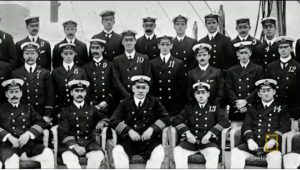 in the area tried to warn Titanic, but the radio operator of Titanic did not take the warnings seriously. He was operating under the mistaken idea that Titanic could sail right through any ice field she might come upon, and have no problems whatsoever. The radio operator was wrong. Nevertheless, he shut of the radio after the 6th warning transmission. The iceberg strike came at 11:40 pm…but the first distress call was sent almost an hour later and even then the ships receiving the calls could did not believe it could be real. Finally, at 12:40 am, Carpathia’s radio operator gave the call to head for Titanic’s last known position.
in the area tried to warn Titanic, but the radio operator of Titanic did not take the warnings seriously. He was operating under the mistaken idea that Titanic could sail right through any ice field she might come upon, and have no problems whatsoever. The radio operator was wrong. Nevertheless, he shut of the radio after the 6th warning transmission. The iceberg strike came at 11:40 pm…but the first distress call was sent almost an hour later and even then the ships receiving the calls could did not believe it could be real. Finally, at 12:40 am, Carpathia’s radio operator gave the call to head for Titanic’s last known position.
Help would come too late for Titanic. By 2:20 am on April 15, 1912, Titanic sank, but she was not without her heroes. As the Titanic was sinking, the deck crew began loading passengers onto lifeboats. The engineering crew stayed at their posts to work the pumps, controlling flooding as much as possible. This action ensured the 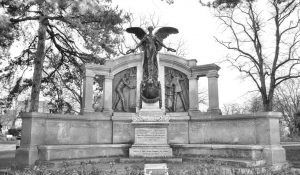 power stayed on during the evacuation and allowed the wireless radio system to keep sending distress calls. These men bravely kept at their work and helped save more than 700 people…even though it would cost them their own lives. When Titanic went down, she took with her 1500 people. of those, 688 were crew members, including all 25 of the engineers who worked tirelessly, at their own peril to buy what little bit of time they could for the passengers in their care. Many of the crew members forfeited their lives so that the passengers might live. Were serious mistakes made…yes, of course, but by the same token, the sinking of Titanic saw some of the most amazing bravery ever.
power stayed on during the evacuation and allowed the wireless radio system to keep sending distress calls. These men bravely kept at their work and helped save more than 700 people…even though it would cost them their own lives. When Titanic went down, she took with her 1500 people. of those, 688 were crew members, including all 25 of the engineers who worked tirelessly, at their own peril to buy what little bit of time they could for the passengers in their care. Many of the crew members forfeited their lives so that the passengers might live. Were serious mistakes made…yes, of course, but by the same token, the sinking of Titanic saw some of the most amazing bravery ever.

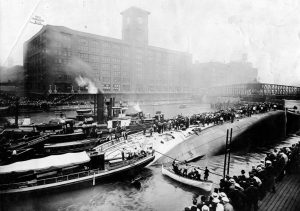 Shipwrecks on the Great Lakes are not a totally uncommon event. Over the last 300 years, Lake Michigan has claimed countless ships, mostly in violent storms and bad weather, especially when the gales of November come in. Nevertheless, a few ships went down without even reaching open waters. One of those ships was the SS Eastland, which went down while docked between LaSalle and Clark Streets on the Chicago River. That site and that ship became the site of the greatest loss of life on the Great Lakes, and it wasn’t a fire, explosion, or act of war, but rather something far more strange.
Shipwrecks on the Great Lakes are not a totally uncommon event. Over the last 300 years, Lake Michigan has claimed countless ships, mostly in violent storms and bad weather, especially when the gales of November come in. Nevertheless, a few ships went down without even reaching open waters. One of those ships was the SS Eastland, which went down while docked between LaSalle and Clark Streets on the Chicago River. That site and that ship became the site of the greatest loss of life on the Great Lakes, and it wasn’t a fire, explosion, or act of war, but rather something far more strange.
The SS Eastland was built by the Michigan Steamship Company in 1902 and began regular passenger service later that year. In July 1903, the ship held an open house so the public could have a look. The sudden number of people, particularly on the upper decks, caused the Eastland to list so severely that water came in through the gangways where passengers and freight would be brought aboard. The ship was obviously top-heavy and this problem had to dealt with quickly, but these incidences continued to plague the ship. In 1905, the Eastland was sold to the Michigan Transportation Company. During the summer of 1906, the Eastland listed again as it transported 2500 passengers, and her carrying capacity was reduced to 2400. But in July 1912, the Eastland was reported as having once more listed to port and then to starboard while carrying passengers. In 1915, the LaFollette Seaman’s Act, which was created as a response to the Titanic not carrying sufficient lifeboats, was passed. The Seaman’s Act mandated that lifeboat space would no longer depend on gross tonnage, but rather on how many passengers were on board. However adding extra weight to the ship put top-heavy vessels like the Eastland at greater risk of listing. In fact, the Senate Commerce Committee was cautioned at the time that placing additional lifeboats and life rafts on the top decks of Great Lakes ships would make them dangerously unstable. This was a warning that the Senate Committee and the Eastland should have heeded.
On July 24, 1915, the Eastland once again fell victim to its top heavy design, and this time the outcome was disastrous. On that cool Saturday morning in Chicago, the Eastland and two other steamers were waiting to take on passengers bound for an annual company picnic in Michigan City, Indiana. For many of the employees of Western Electric Company’s Hawthorne Works, this would be the only holiday they would enjoy all year. A large number of these employees from the 200-acre plant in Cicero, Illinois were Czech Bohemian immigrants. Excitement was in the air as thousands of employees thronged along the river. Three ships would transport them across Lake Michigan to the picnic grounds in Indiana. The Eastland was slated to be the first ship boarded. That morning the Eastland was docked between LaSalle and Clark Streets on the Chicago River. As soon as passengers began boarding, Captain Harry Pedersen and his crew noticed that the ship was listing to port even though most passengers were gathered along the starboard. Attempts were made to right the vessel, but stability seemed uncertain. At 7:10am, the ship reached its maximum carrying capacity of 2572 passengers and the gangplank was pulled in.
As the captain made preparations to depart at 7:21am, the crew continued to let water into the ship’s ballast tanks in an attempt to stabilize the vessel. At 7:23am, water began to pour in through the port gangways. Within minutes, the ship was seriously listing but most passengers seemed unaware of the danger. I wondered how this could have continued to happen, until I saw this video, that explained it very well. By 7:27am, the ship listed so badly that passengers found it too difficult to dance so the orchestra musicians started to play ragtime instead to keep everyone entertained. Just one minute later, at 7:28am, panic set in. Dishes crashed off shelves, a sliding piano almost crushed two passengers, and the band stopped playing as water poured through portholes and gangways. In the next two minutes, the ship completely rolled over on its side, and settled on the shallow river bottom 20 feet below. Passengers below deck now found themselves trapped as water gushed in and heavy furniture careened wildly. Men, women and children threw themselves into the river, but others were trapped between decks, or were crushed by the ship’s furniture and equipment. The lifeboats and life jackets were of no use since the ship had capsized too quickly to access them. In the end, 844 people lost their lives, including 22 entire families. It was a tragedy of epic proportions.
Bystanders on the pier rushed to help those who had been thrown into the river, while a tugboat rescued passengers clinging to the overturned hull of the ship. An eyewitness to the disaster wrote: “I shall never be able to forget what I saw. People were struggling in the water, clustered so thickly that they literally covered 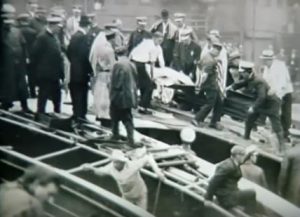
 the surface of the river. A few were swimming; the rest were floundering about, some clinging to a life raft that had floated free, others clutching at anything that they could reach…at bits of wood, at each other, grabbing each other, pulling each other down, and screaming! The screaming was the most horrible of them all.” Yes, I’m sure that was the worst, and the loss of life was something that would never be forgotten…especially for an eye witness.
the surface of the river. A few were swimming; the rest were floundering about, some clinging to a life raft that had floated free, others clutching at anything that they could reach…at bits of wood, at each other, grabbing each other, pulling each other down, and screaming! The screaming was the most horrible of them all.” Yes, I’m sure that was the worst, and the loss of life was something that would never be forgotten…especially for an eye witness.
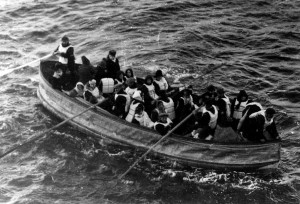 Whenever a big train wreck, plane crash, ship sinking, or other major accident occurs, someone must investigate. Depending on what happened, it can be someone like the NTSB, or in some cases, as in the Titanic sinking, it can go as high as the Senate. Of course, answers need to be found, so that corrections in procedure can be made.
Whenever a big train wreck, plane crash, ship sinking, or other major accident occurs, someone must investigate. Depending on what happened, it can be someone like the NTSB, or in some cases, as in the Titanic sinking, it can go as high as the Senate. Of course, answers need to be found, so that corrections in procedure can be made.
In the case of the Titanic, the accident was brought before the Senate Commerce Committee. I think most of us know the story of the Titanic well, given the movies and documentaries that have come out about it. The official final report, however, went into much more detail than most people know about, and more than I can go into here. I think most of us know that the ship was not sufficiently run through the test trials to properly break in the engines. Nevertheless, the Titanic was run at full speed through trecherous waters, without regard for the damage that could have come to pass.
In addition to this problem, it was noted that many of the crew members did not join the ship until just a few hours before it sailed, and the only drill carried out, consisted of lowering just two lifeboats on the starboard side into the water. There was no boat list designating the stations members of the crew were posted to until several days after sailing. This left the crew in ignorance of their stations until the following Friday morning. Of course, as we all know, there were not enough lifeboats on the ship, because it was thought to clutter the deck, and to be unnecessary. In reality there were only boats enough for only 1,176 of the 2,228 people on board…and of those, only 710 survived, meaning that lifeboats were lowered only partially loaded. Had the Titanic been loaded to full capacity, which was 3,339 passengers and crew, there would have only been room for a third of the people on the lifeboats. and as was the case of only loading the lifeboats half full, 2,629 people would have died.
It was the conclusion of the Senate Commerce Committee, that there were several areas of gross negligence  on the part of White Star Line and the crew of the Titanic. In fact the committee was actually appalled, as it should have been. They called the Titanic, and unnecessary tragedy. Improperly trained crew and improper procedures, can be a deadly mix, and as was the case with Titanic, death is what ensued. Many laws have changed as a result of the hearings, but I have to wonder why it takes such a devastating accident to bring about a proper, concervative apporoach to the handling of many areas of transportation, construction, and work ethic. To me, it seems a little late to try to put proper safety methods in place when the ship has already sunk, but then I guess it does protect those who will come after.
on the part of White Star Line and the crew of the Titanic. In fact the committee was actually appalled, as it should have been. They called the Titanic, and unnecessary tragedy. Improperly trained crew and improper procedures, can be a deadly mix, and as was the case with Titanic, death is what ensued. Many laws have changed as a result of the hearings, but I have to wonder why it takes such a devastating accident to bring about a proper, concervative apporoach to the handling of many areas of transportation, construction, and work ethic. To me, it seems a little late to try to put proper safety methods in place when the ship has already sunk, but then I guess it does protect those who will come after.

